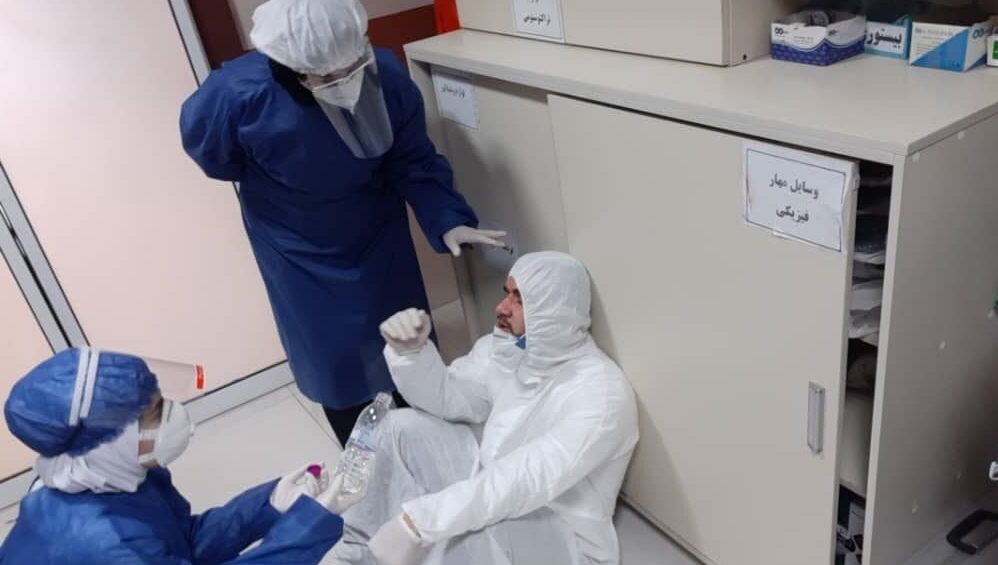
Labelled as an “emergency”, the paper details the grim plight of patients, with critically ill individuals suffering the most. The research led to an interview with a nurse named Enayati who shared that specific hospitals have a meager two nurses for an astonishing 35 patients in one ward. This acute nurse shortage in Iranian medical facilities results from the COVID-19 aftermath and the subsequent laying off of nurses as the pandemic ebbed.
But the repercussions extend beyond unemployment for nurses. The patients’ lives hang in the balance. As recently as August, Abbas Ebadi, the Deputy Minister for Nursing at the Ministry of Health, divulged a shocking deficit of 100,000 new nurses, a considerable shortfall against the existing 215,000 nurses.
The study dove deep into three specialty hospitals — infectious diseases, maternity, and recovery — revealing each one battling the nursing crisis. In maternity sections, it’s startling to note one nurse overseeing 15 patients, a glaring breach of global healthcare norms.
The Iranian regime’s destructive policies have made the brain drain phenomenon a daily routine. Doctors, nurses, engineers, and other elites are fleeing #Iran and seeking better lives in other countries.
Read more herehttps://t.co/ODe9iuszV4pic.twitter.com/cCLE5suTRN— NCRI-FAC (@iran_policy) September 7, 2021
With the global nurse-to-patient ratio being approximately 2.5, Iran’s 0.8 ratio, which dips to 0.6 in certain regions, is alarming. Adding to their ordeal, Iranian nurses are burdened with mandatory 150-hour overtimes over their regular 130-hour monthly shifts, equating to the tasks of an extra staff member. Moreover, their entitled 30 days of annual vacation often remain a distant dream.
In terms of compensation, the scenario is bleak. Mohammad Sharifi Moghadam, from the Nursing House, pinpointed the situation’s severity. Hospitals, grappling with shortages, enforce overtime but compensate nurses inadequately. Some nurses, working 100 hours, only get paid for 80. Aggravating their plight, their already meager overtime salaries, ranging between 16,000 to 20,000 tomans, often see delays of up to six months.
With Tehran’s poverty line sitting at approximately 30 million tomans monthly, the typical nurse’s earnings of 10-12 million tomans, including overtime, are starkly insufficient.
#Iran News in Brief
Mohammad Sharifi Moghadam, the Secretary General of Iranian #Nursing Home, stated that problems such as low wages have forced most Iranian #nurses to seek immigration. https://t.co/LzjezqKXTn pic.twitter.com/CsjTRE6zed— NCRI-FAC (@iran_policy) April 25, 2023
The reluctance of the Ministry of Health in permanent hiring, combined with the nursing graduates’ aversion to underpaid contractual jobs, leaves existing staff overburdened. Further compounding the problem is the influx of untrained healthcare staff and the escalating trend of nurse emigration. Non-standard recruits, devoid of official clinical training, result in mounting medical errors and escalated death rates.
Data from nursing unions unveil a dwindling nurse count annually, with resignations, retirements, or migrations. Mohammad Mirzabeygi, head of Iran’s Nursing Organization, highlighted a worrying trend — daily departures of five to six nurses and monthly emigrations of 100-150 nurses.
In reality, these numbers might be understated, as several nurses don’t opt for certification. Official figures suggest a yearly migration of 1,200 to 1,500 nurses, predominantly to Persian Gulf nations.
#Iran News in Brief
Mohammad Mirzabeigi, the head of the Iranian regime’s #Nursing Organization admitted on Sunday, May 15, that 5,000 nurses had been fired in the past three months.https://t.co/W2Uen41dZS pic.twitter.com/KB8rNjApCf
— NCRI-FAC (@iran_policy) May 16, 2022
With such dire circumstances, it’s no surprise that Iranian nurses are veering towards alternate professions, from construction and ridesharing to bakeries and bus driving.

MEK Iran (follow us on Twitter and Facebook), Maryam Rajavi’s on her site, Twitter & Facebook, NCRI (Twitter & Facebook), and People’s Mojahedin Organization of Iran – MEK IRAN – YouTu







